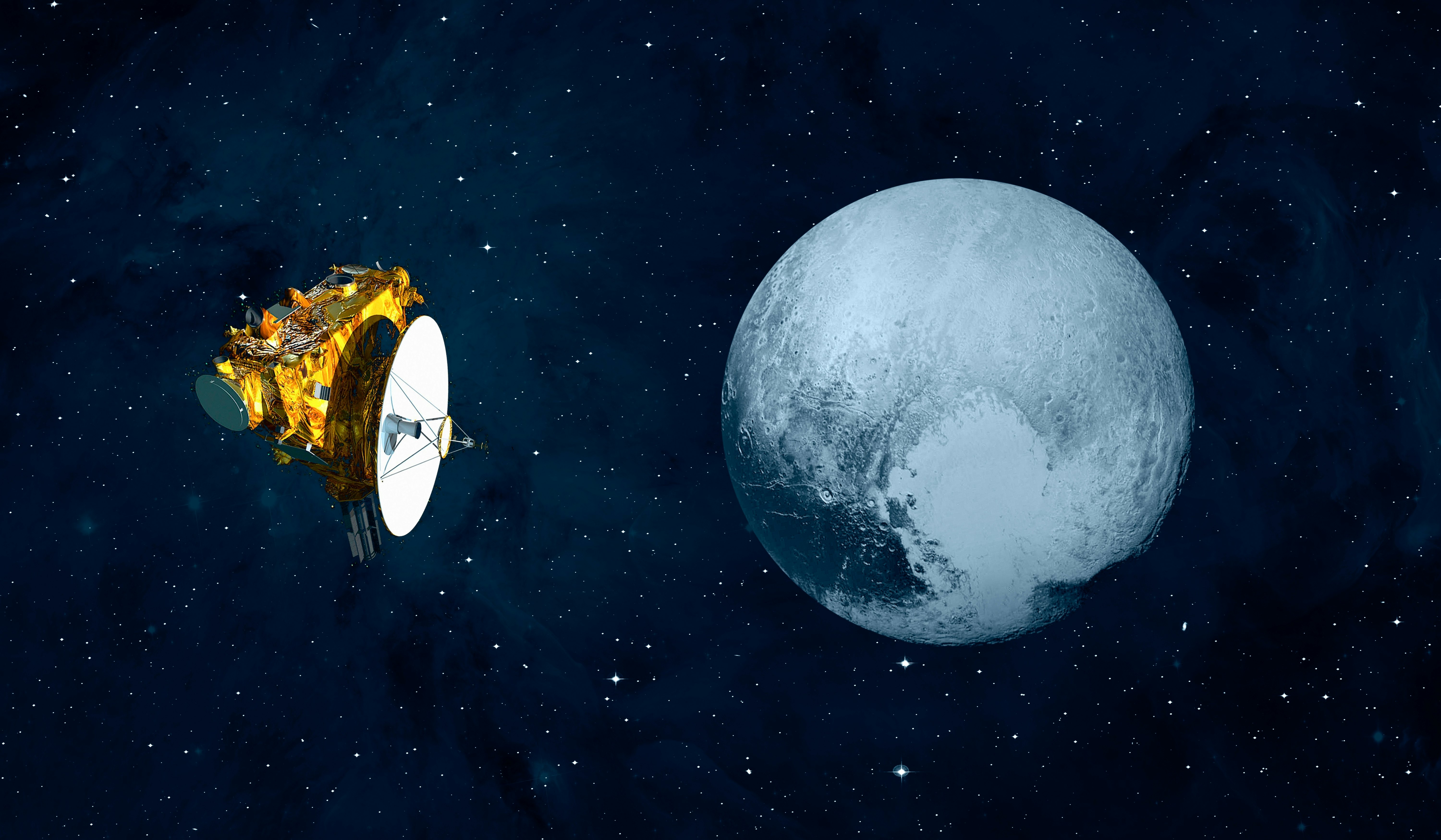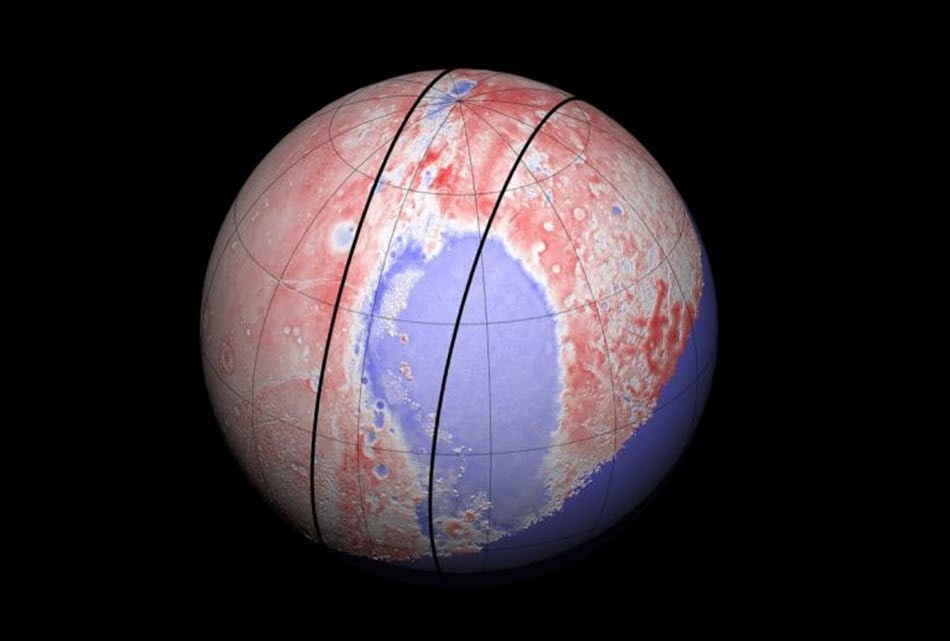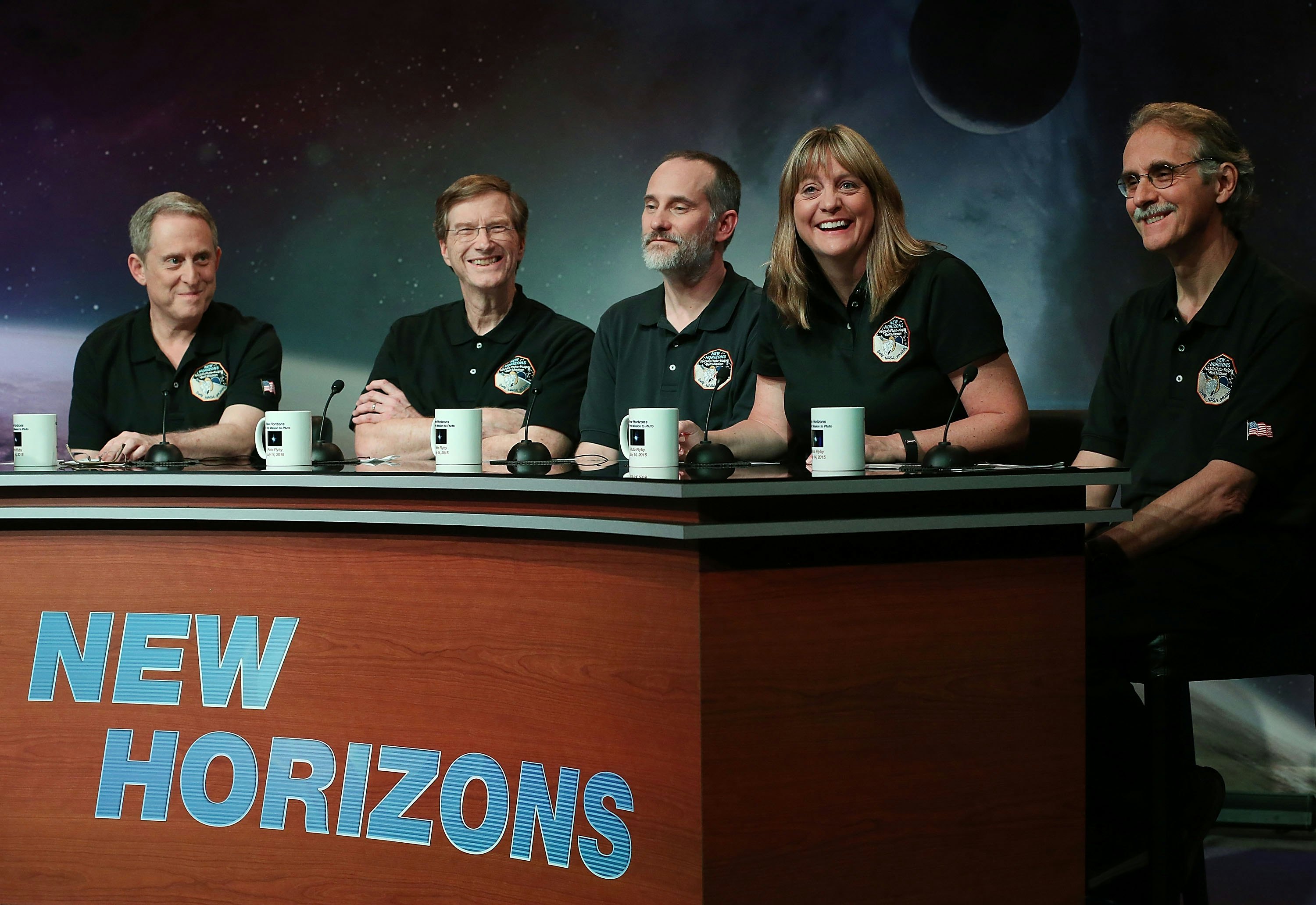
The New Horizons mission currently flying through the Kuiper Belt could be facing an unexpected change of plans. NASA’s Science Mission Directorate is soliciting input on turning the spacecraft into a heliospheric science probe. The agency wants to do it much sooner than mission planners intended. If that happens, it will stop further planned planetary exploration of objects in that distant regime of the Solar System.
The changes NASA proposes come as a surprise since the spacecraft continues to perform Kuiper Belt object observations. And it has received a very good recent senior science review. That report stated, “This is likely the only spacecraft humans will send through the outer Solar System for at least 20 – 30 years. The investigations proposed are strengthened by the unique position of this asset.”
More Kuiper Belt Studies
To date, the mission continues to accomplish its planned science goals in planetary exploration. “We’re doing a variety of Kuiper Belt science — including tracing the dust distribution from colliding KBOs out much farther than ever before,” said principal investigator Alan Stern. “We’re studying new, more distant KBOs from angles and closer ranges that you can’t get from Earth to determine their surface properties, their satellite counts, and shapes, things that cannot be done well except by a spacecraft in the Kuiper Belt. And, of course, we’re on the prowl for a new flyby target if one can be found.”
Stern points out that the mission has, through 2022, observed and characterized 36 Kuiper Belt objects. In addition, it has studied several dwarf planets from its unique vantage point in the belt. Data from those observations help calculate the shapes, orbits, and surface textures of these very distant bodies.
What the science teams have found so far will help place some important constraints on KBO formation mechanisms. Future observations should also help the teams understand the processes driving the surface evolution and compositional differences between various KBOs.
Building on New Horizons Observations of Pluto and Arrokoth
Science also continues to flow from the mission’s earlier discoveries, as reported at the March Lunar and Planetary Science conference. For example, the team may have figured out how the primitive Kuiper Belt object Arrokoth formed by gentle accretion. They’ve also been tracking the phenomenon of polar wander on Pluto. It turns out that the surface feature Sputnik Planitia may play a role.

The spacecraft is well placed to “look back” and capture views of Uranus and Neptune. Those observations will be done in tandem with the Hubble Space Telescope. In addition, New Horizons will continue its planned studies of the heliosphere. Finally, it will continue to map the cosmic background in optical and ultraviolet light. In other words, there’s plenty for the spacecraft to do in astrophysics, cosmology, and solar system sciences.
Searching for the Next Target
Since the Arrokoth encounter, the team’s been hunting for another flyby target. According to Stern, it’s been an intense search. “We’re twice as far out from Earth as when we found Arrokoth, which makes the targets we search for sixteen times farther. So, the search is much harder,” he said. “This is the only chance we’ve got to do Kuiper Belt science for decades, and we need time to find the next target.”
That hunt uses enhanced equipment on ground-based telescopes and also takes advantage of machine-learning AI software. The Subaru Telescope in Hawai’i has a new high-throughput filter on its giant Hyper Suprime-Cam digital camera. The New Horizons team specifically purchased that filter to use in the KBO search. The Dark Energy Camera instrument at the Cerro Tololo Inter-American Observatory in Chile is another tool in the hunt. Those facilities should be able to find what amounts to a needle in the Kuiper Belt haystack. If the team finds an object along the New Horizons trajectory, they’ll spool up planning for its observations.
Proposed Changes from NASA
So, given the current successes, why is NASA looking to discontinue planetary science using New Horizons? The first hints about this proposed change came when the agency sent word that the current extended mission would end on October 1, 2024. Originally, the team asked for funding to continue Kuiper Belt science through 2025. However, in May 2022, NASA informed the team of the cutback to only two years of further exploration. The team is working on getting the third-year back. This is important since the mission will be traversing the Kuiper Belt until at least 2027-2028. That gives plenty of time to do more planetary science.
Other hints of possible changes came in another NASA Science Mission Directorate (SMD) suggestion. This one is to move the mission from the Planetary Science section to the agency’s Heliophysics division. SMD also issued a request for Information (RFI) on March 15, 2023. It states, “SMD is exploring whether interested science teams have a set of science objectives to propose to NASA for the use of the mission beyond FY24. The purpose of this RFI is to gauge the level of interest of the wider science community in pursuing the next phase of science leadership for the mission and to estimate appropriate annual costs.”
The SMD request for input from the larger science community seems focused on what to do with the mission (and its team) now that the Pluto and Arrokoth flybys are over. It doesn’t acknowledge that New Horizons hasn’t finished its survey of the Kuiper Belt. Plus, it’s still actively doing planetary science there.
Presenting the Changes
At an SMD question-and-answer session on April 6, Planetary Science Division director Lori Glaze acknowledged the mission extension proposal for operations past Fiscal Year 2024. She also noted that it received a good senior review as a multi-disciplinary approach for planetary science, astrophysics, and heliophysics.
Glaze stated, “[The review] says that the probability of additional science return for planetary science with New Horizons spacecraft is quickly diminishing and that there’s very little additional planetary science that we can gain from the spacecraft.” Glaze also pointed out that the astrophysics and heliophysics divisions evaluated the same review. “They did identify significant heliophysics science that could be done from this unique location in the solar system,” she said.
The actual review she refers to says something slightly different. It states that proposed KBO studies are unlikely to dramatically improve the state of knowledge. This is a statement some planetary scientists have characterized as a naive assumption. But, it does not say specifically that there’s very little planetary science to be gained. It also goes on to point out that an extended mission would support all the planetary science, plus astrophysical and heliophysics objectives outlined in the 2003 Decadal Survey.

Truncating Valuable Planetary Science?
Despite the favorable reviews and mission accomplishments, the proposed plan to abruptly stop doing planetary science with New Horizons and turn it into a heliospheric mission will be devastating. According to Stern, if a further extension is not granted, it amounts to a truncation of New Horizons Kuiper Belt planetary science years too early.
“New Horizons is a national treasure,” he said. “We’ll never get another Kuiper Belt extension if it goes to Heliophysics Division. Right now, we need to exploit this mission for every bit of planetary and particularly Kuiper Belt science we can get while we’re still in the Kuiper Belt.”
Historically, the exploration of this regime of the solar system came from a prime recommendation of the 2003 Planetary Decadal Survey. It recommended a Pluto-Kuiper Belt explorer mission as a way to study solar system history, volatiles, and organics in the solar system. The survey report specifically stated that “KBP’s value increases as it observes more KBOs and investigates the diversity of properties.”
It further points out that “The SSE Survey anticipates that the information returned from this mission might lead to a new paradigm for the origin and evolution of these objects and their significance in the evolution of objects in other parts of the solar system.”
That survey led to the creation of the New Horizons mission to Pluto and the Kuiper Belt. Its prime aims were to do as much planetary science in the Belt as possible. It also included robust heliophysics and astrophysical components from the beginning. So far, it has accomplished all those types of observations and more.
What’s Lost If New Horizons KBO Mission Gets Shortened?
According to Mark Sykes, a planetary scientist and CEO and Director of the Planetary Science Institute, the potential loss of planetary science from New Horizons is a big deal. “It has a collection of instruments and a team that’s operating now that knows best how they operate, their sensitivities, and so on,” he said. “New Horizons is the one opportunity we have to study these objects in their primordial state in the region where they have resided frozen for the age of the solar system.”
“Four years ago, New Horizons flew by the first such object ever seen, Arrokoth,” he said. “The most important thing NASA can do now is to make every effort to find a second target for New Horizons to fly by. It is the only way we could get any clue about the physical diversity of these objects, which would greatly impact our understanding of the formation and evolution of the solar system.”
Sykes points out that the search for a flyby target is high risk. “There might not be a target close enough to New Horizons’ flight path. But, the very high payback and the marginal cost of the effort is tiny compared to the billion dollars already invested by taxpayers in this mission, he said. “While they hunt, there are a lot of unique planetary, astrophysical, and heliophysics observations that can be made. To not make these observations, to not make an effort in planetary, as well as astrophysics, and heliophysics with everything this spacecraft can do, to me, is a crime.”
Sykes also pointed out that the spacecraft’s position in the Kuiper Belt provides a unique look at dust distribution there. That’s because it’s taking in situ measurements. “The dust tells you something about the collisional environment there and provides a really important constraint in terms of what’s going on,” he said.
What’s Next?
For now, New Horizons has not yet been moved out of the planetary science portfolio. NASA is still soliciting input from the broader science community over the proposed move. The RFI ends on April 17th.
The New Horizons team is working on getting the planetary component extended. They also want to keep experienced mission scientists in place. Although the RFI doesn’t state it directly, the wording seems to suggest that the Science Mission Directorate is looking to replace the current science team with new groups of scientists who will propose heliophysics science for the spacecraft moving forward. These researchers would not be as familiar with the mission instruments.
Something like this has never been done to any spacecraft team before, said Stern. He fears that if new people are brought in to run the mission, the current team will be sent packing, unfunded, and unaffiliated with the spacecraft they worked to build, launch, and operate. And the loss to science is incalculable.
“If they shut it down as a planetary mission, it will be the end of Kuiper Belt exploration for several decades,” he said. “Cutting us off prematurely is exactly counter to what the Decadal Survey recommended.”
Planetary Mission Challenges
This challenge to New Horizons and its science team plays out against a backdrop of big budget issues at NASA. Just as one example, the agency is grappling with delays to the flagship Mars Science Return mission. There is talk about descoping it to save money. The Veritas mission just got delayed by three years. That’s largely due to technical issues, as well as funding requirements for other missions.
Budgetary constraints shouldn’t be part of the New Horizons situation, according to Stern. “Our budget request for another mission extension is around $10 million,” he said. That’s an amount the team requested to restore the fiscal year 2025 funding that NASA took away. He compared that to NASA’s overall science budget of just under $8 billion. “It’s a drop in the bucket for the amazing science return we still hope to get.”
This article was originally published on Universe Today by Carolyn Collins Petersen. Read the original article here.







